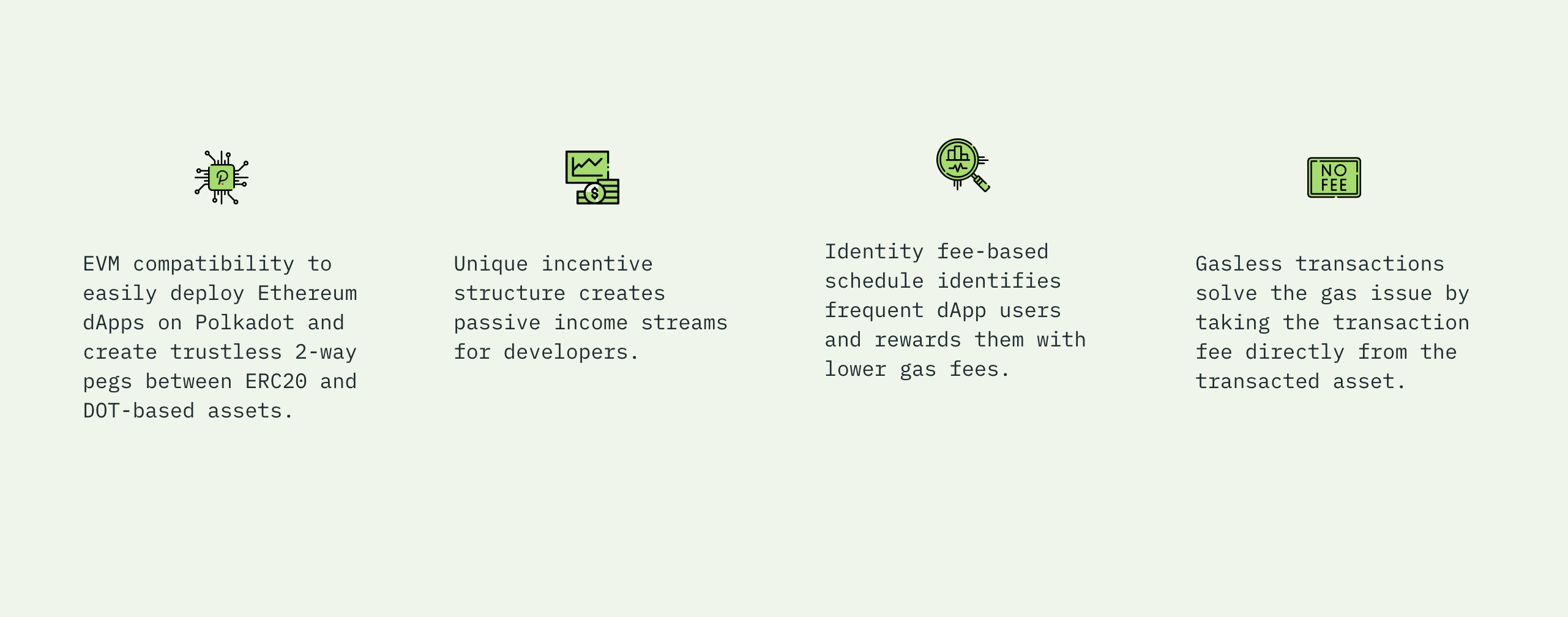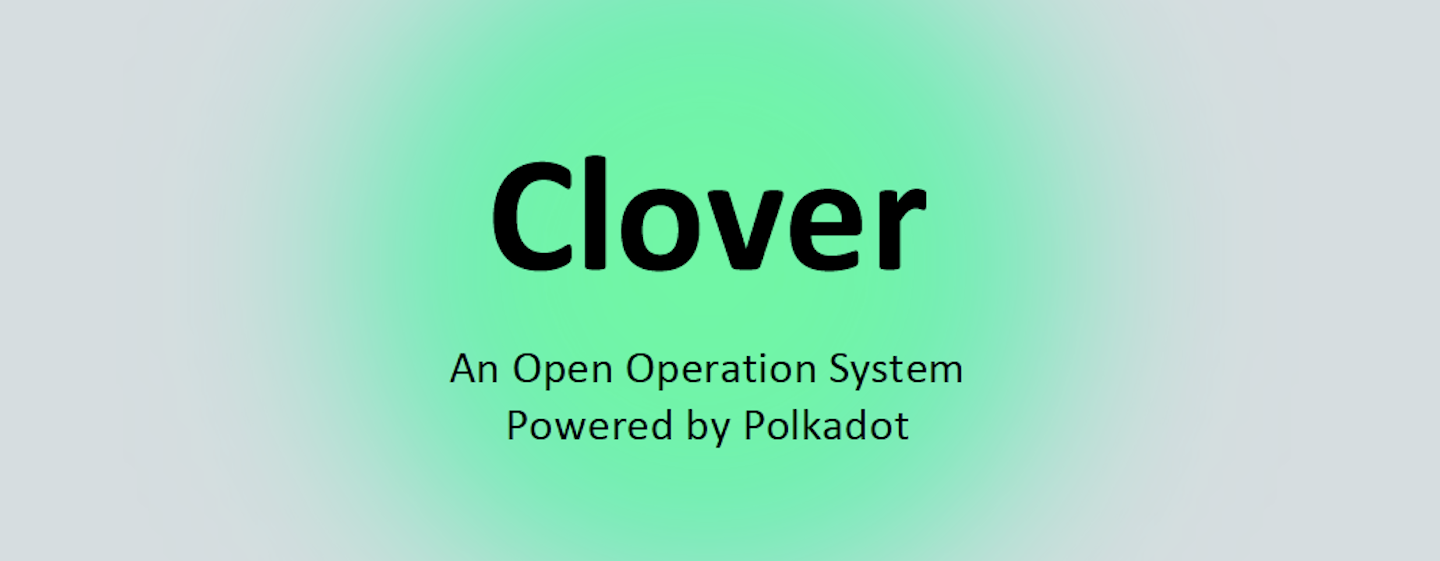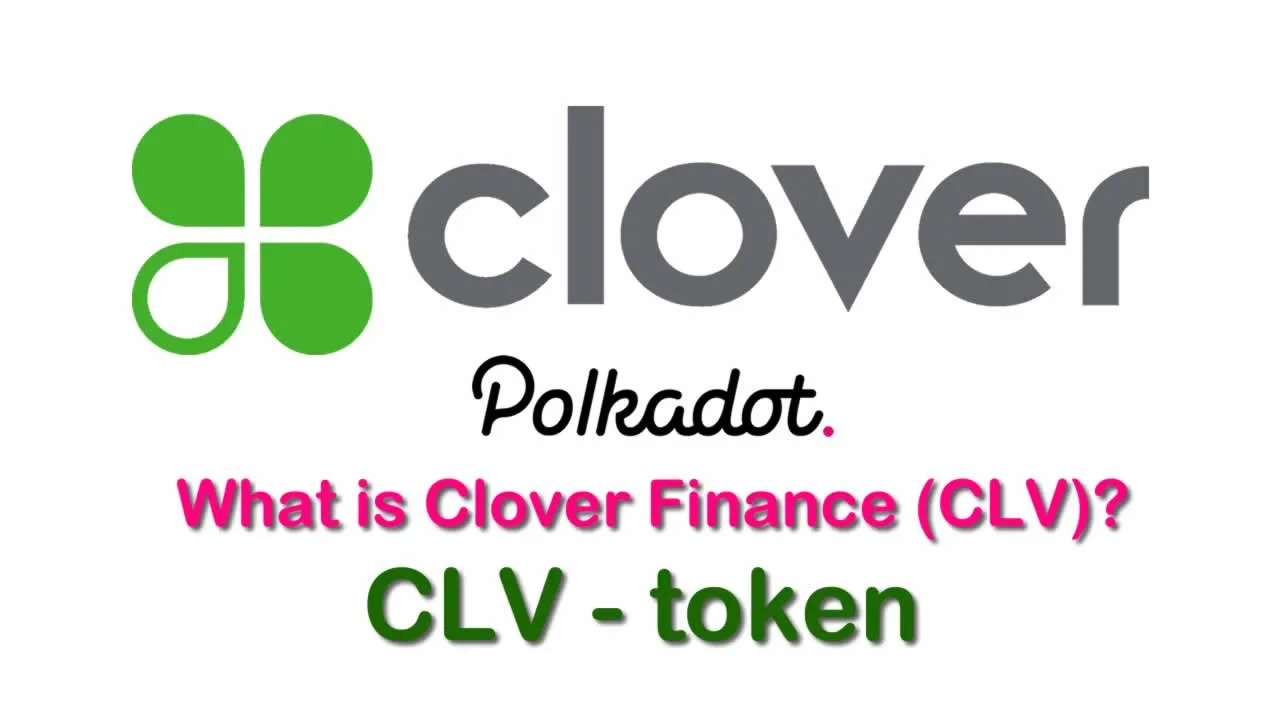What is Clover Finance (CLV) | What is Clover Finance token | What is CLV token
Clover: a Parachain for Cross-chain DeFi Interoperability

Clover: Easy-to-use Blockchain Infrastructure
Clover is a one-stop cross-chain DeFi bridge that provides a seamless gateway to DeFi for everyone including those who are completely new to DeFi.
We’re building a foundational layer to enable Gasless user interactions to simplify user experience for non-crypto users, reduce the development threshold for upper-layer applications, and provide a wide range of developer tools from identity-based scripting capabilities to built-in cross-chain interoperability.
What if…?

The decentralized financial networks of today remain isolated in silos that cannot trustlessly communicate with each other and meaningfully exchange value. This led to some third party custodial services who make the overall ecosystem more centralized, taking away the essence of what blockchain is all about.
To achieve a new-level of interoperability, Clover created the model of built-in SPV chain simulation technology that allows seamless cross-chain communication and trustless two-ways pegs between Turing-complete blockchains.
All the communication between blockchains relayed through the Clover-native IPFS layer, stored and evaluated within the EVM context. Our SPV chain simulation technology is in-line with the Clover scripting layer, that can benefit third party dApp builders with easy-to-access opcode functionalities.
In addition to cross-chain communication we identify that today’s DeFi applications require a solid financial foundation, and donations from the community are generally insufficient to cover development expenses.
The Ethereum network for example, where the largest portion of dApps are deployed, directs the entire gas fee to miners. However, we strongly believe that dApp builders should be incentivized and benefit from making contributions to the ecosystem by receiving a part of the gas fee as passive income.
To achieve a sustainable development culture, in addition to building an EVM compatible infrastructure to easily migrate existing dApps onto Clover, we re-parameterized the gas distribution model to direct gas fees to both network maintainers and dApp builders.
We believe incentivizing third party developers and commons, boosts external dApp development which ultimately enlarges the Clover and Polkadot DeFi ecosystems altogether.
This is consistent with Clover’s properties of being a decentralized operating system which does not touch the inflation schedule or alter the scarcity of the CLV token, but effectively increases the security of smart contracts against bugs and software vulnerabilities by enabling external development to be properly funded.
We also identified that the concept of gas is unfamiliar to most non-technical users those with no prior exposure to blockchain, cryptocurrencies or DeFi applications. For example, people with no ETH in their wallet are unable to send transactions directly on EVM networks due to their lack of ability to pay for gas.
It’s no surprise that many Ethereum users complain about having ERC-20 tokens, but are unable to move them since they don’t have the base currency which is ETH, to pay for gas.
This forces new users to purchase ETH before they can start interacting with the network, which is a major hurdle in user onboarding and mass adoption for dApps.
To provide an overall frictionless user experience, Clover has redesigned feeconomics to allow relayers to act on behalf of the sender where they can cover gas price in the base currency, and receive compensation in the denominated asset.
The goal is for end-users to be able to seamlessly transact their tokens by covering the fee with the same token from the amount they transact, without depending on the base currency, ETH. We believe this makes the overall UX better at a significant margin.
Simplifying user experience can create the potential for a very exciting future in which Clover can grow and compete, and can reach its goal of becoming the best possible DeFi platform for all.
Clover, Polkadot-Based All-Round DeFi Service Platform
Low Gas Price, High Speed, and Enhanced Asset Security

With its $11 billion total value locked, representing a year-to-date growth of more than 15x, decentralized finance (DeFi) has become a mainstay in the crypto world, and a whole new industry in itself. However, the Ethereum DeFi frenzy is seemingly cooling down recently. According to CoinTelegraph, most ETH DeFi tokens are corrected by anywhere between 15% to 85% across September. Meanwhile, the total TVL increase rate of Ethereum DeFi projects is gradually falling.
In terms of the reasons, most potential retail users are scared off by the skyrocketing Gas fee on Ethereum whereas existing users are often frustrated by the low network efficiency. According to Glassnode, despite fluctuations, the daily transaction fees on ETH is demonstrating an overall climbing trend since early July. On Sep 17, the daily transaction fee volume recorded All Time High at around $17 million at that day’s price.
While the cost of making a simple Ether transaction multiplied, interacting with DeFi contracts requires jaw-dropping handling fees, sometimes even higher than the transaction amount itself. As of the time of writing, making an ETH to DAI swap requires $10 in Gas fee on Uniswap, $12 on SushiSwap, and $14 on Balancer.
Polkadot-Based Open DeFi Platform Clover Provides Users with a Substitute Financial Tool
As pointed out by many industry insiders, even with a complete upgrade and PoW to PoS mechanism migration, Ethereum 2.0 may not be the ultimate answer to the high Gas fees and congestion problems. Hence, Clover looked for the perfect solution and found the answer in Polkadot. To tackle the current challenges in the Ethereum DeFi ecosystem, Clover is developed based on Substrate, the foundation of the Polkadot network.
As a sharded multichain network, Polkadot is able to process many transactions on several chains in parallel, eliminating the bottlenecks that occurred on legacy networks that processed transactions one-by-one. This parallel processing power significantly improves scalability and creates the right conditions for increased adoption and future growth. With Polkadot and Substrate, Clover is able to realize low gas fees and high-speed trading experience for its users.
Meanwhile, the Substrate framework and Polkadot parachain technology facilitates anonymity and makes the seamless verification process a reality. Clover also implements oracles, which are used to fetch trusted off-chain data to be included in the on-chain state and enable lending, borrowing and more.
Advantages of Clover
Clover stands out among DeFi projects with the following advantages:
- Quick access: no need to register or verify an account
- Peer-to-peer: no one can stop or control the trading
- Trustless: no centralized governance entity. Token holders have control over the system
- Cheap and faster transactions: Polkadot solves the current Ethereum network problems
- Secure: non-custodial, always be in charge of your funds
- Private: no personal information is stored
- Fair: no fake orders and wash trading
- Efficient: scalable and cross-chain communication on Polkadot network
Clover Native Token: CLV
Clover is powered by the native CLV utility token to support an additional set of features and add incentives to ecosystem contributors.
CLV Functions
CLV can be used in the following ways:
- Stake to run nodes
- Participate in consensus and earn rewards
- Transact on exchanges and marketplaces
- Earn rewards from platform usage
- Participate in governance activities for a predetermined set of parameters
Governance
As an open platform, the future of Clover is collectively decided by the whole community. The community can propose, vote, and implement changes through governance smart contracts.
The governance structure is as follows:
- Proposals: There will implement a proposal mechanism to update system parameters.
- Voting policy: One token represents one voting power in the voting system. Only token holders can participate in the voting process and they can get rewards once the proposal is successfully complete.
- Governing parameters: Token holders can vote to set and change parameters in the DeFi environment. The parameters include the percentage of tokens for burning, the percentage of tokens for staking, the number of tokens that a new listing needs to pay, and incentive token release schedule, etc.
- Contract developments: This involves structural changes in DeFi environments. For example: implementing new functionalities, deploying the protocol on additional smart contract blockchains, and introducing more DeFi elements.
Announcing the Clover Token Sale on CoinList

We’re proud to announce that starting on April 20, eligible CoinList users will be able to participate in the Clover (CLV) token sale on CoinList.
Clover, a recent alumni of CoinList Seed, is a foundational layer for cross-chain compatibility that is building a bridge between Ethereum and Polkadot.
The community sale will take place on April 20th at 17:00 UTC, while Rounds 2 and 3 will take place on April 21st at 17:00 UTC and 20:00 UTC respectively. The three price tiers are available to all eligible* participants:
- Community: 75M tokens, $0.20 per token, 12-month lockup
- Round 2: 40M tokens, $0.29 per token, 6-month lockup
- Round 3: 35M tokens, $0.35 per token, 40-days lockup
How and Where to Buy Clover Finance (CLV)?
CLV has been listed on a number of crypto exchanges, unlike other main cryptocurrencies, it cannot be directly purchased with fiats money. However, You can still easily buy this coin by first buying Bitcoin, ETH, USDT, BNB from any large exchanges and then transfer to the exchange that offers to trade this coin, in this guide article we will walk you through in detail the steps to buy CLV
You will have to first buy one of the major cryptocurrencies, usually either Bitcoin (BTC), Ethereum (ETH), Tether (USDT), Binance (BNB)…
We will use Binance Exchange here as it is one of the largest crypto exchanges that accept fiat deposits.
Once you finished the KYC process. You will be asked to add a payment method. Here you can either choose to provide a credit/debit card or use a bank transfer, and buy one of the major cryptocurrencies, usually either Bitcoin (BTC), Ethereum (ETH), Tether (USDT), Binance (BNB)…
Step by Step Guide : What is Binance | How to Create an account on Binance (Updated 2021)
Next step - Transfer your cryptos to an Altcoin Exchange
After the deposit is confirmed you may then purchase CLV from the exchange: CoinList
There are a few popular crypto exchanges where they have decent daily trading volumes and a huge user base. This will ensure you will be able to sell your coins at any time and the fees will usually be lower. It is suggested that you also register on these exchanges since once CLV gets listed there it will attract a large amount of trading volumes from the users there, that means you will be having some great trading opportunities!
Top exchanges for token-coin trading. Follow instructions and make unlimited money
☞ https://www.binance.com
☞ https://www.bittrex.com
☞ https://www.poloniex.com
☞ https://www.bitfinex.com
☞ https://www.huobi.com
☞ https://www.mxc.ai
☞ https://www.probit.com
☞ https://www.gate.io
☞ https://www.coinbase.com
Find more information CLV
☞ Website ☞ Source Code ☞ Social Channel ☞ Social Channel 2 ☞ Social Channel 3 ☞ Message Board ☞ Coinmarketcap
🔺DISCLAIMER: The Information in the post is my OPINION and not financial advice, is intended FOR GENERAL INFORMATION PURPOSES ONLY. Trading Cryptocurrency is VERY risky. Make sure you understand these risks and that you are responsible for what you do with your money.
🔥 If you’re a beginner. I believe the article below will be useful to you
⭐ ⭐ ⭐ What You Should Know Before Investing in Cryptocurrency - For Beginner ⭐ ⭐ ⭐
I hope this post will help you. Don’t forget to leave a like, comment and sharing it with others. Thank you!
#blockchain #bitcoin #clover finance #clv
